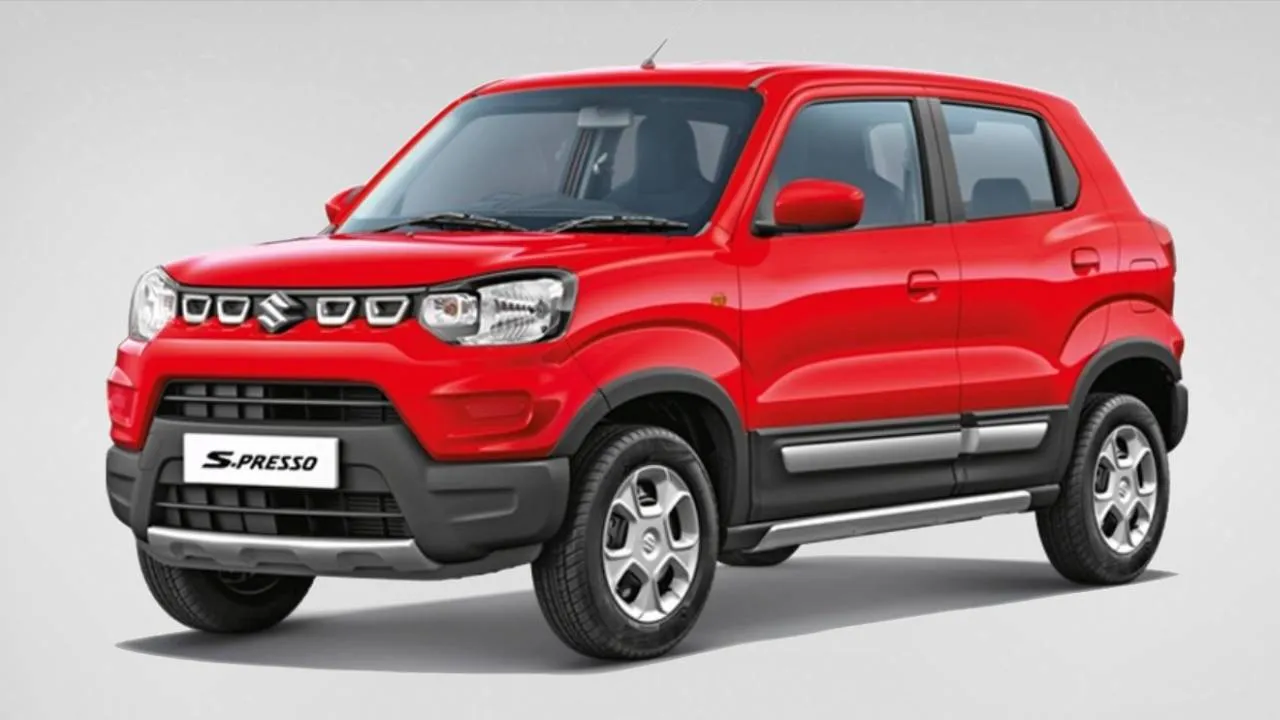Maruti Suzuki S-Presso vs Renault Kwid: Comparison
While its looks are certainly an acquired taste, the Maruti Suzuki S-Presso really shines for a number of reasons. The Renault Kwid, on the other hand, is certain to fancy the millennials. So, we lined these mini-SUVs to see which one does it better.
By Shivank Bhatt
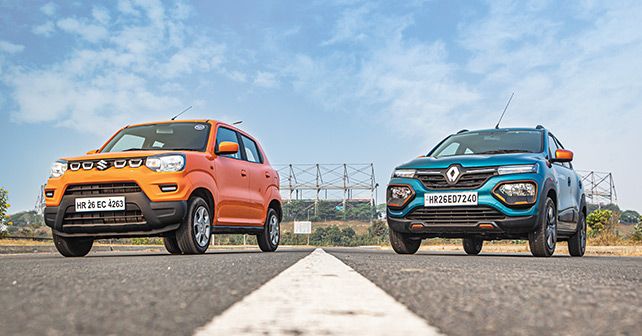
Welcome to the battle of the wannabe SUV hatchbacks, as Maruti Suzuki’s budget brew takes the fight to the latest version of the original hatch-on-steroids from Renault.
In the old days, buying your first car was a fairly simple exercise – you’d simply step out of your house, go to the nearest Maruti Suzuki showroom, and take a spanking new 800 or an Alto home. But it all changed dramatically after 2015, when Renault disrupted the entry-level hatchback segment with the Kwid.
Now, here was a small car that showed us that entry-level hatchbacks don’t necessarily have to be boring or bare bones. It looked the part, thanks to its SUV-inspired styling, and also brought the novelty of a touchscreen to the segment. No wonder, then, that it was received quite well by value-seeking Indian customers and has since remained Renault’s cash cow in India.
Four years later, Maruti Suzuki has now caught on to Renault’s low-cost-big-hit idea with the S-Presso – a tall and spacious entry-level hatchback that wants to be recognised as a mini-SUV. Interestingly, a few days after its launch, Renault, too, gave the Kwid a shot of Botox to keep the pot boiling.
Now, the obvious thing for us is to find out which one is worth your hard-earned money, without throwing anymore puns into the mix. So, here goes…
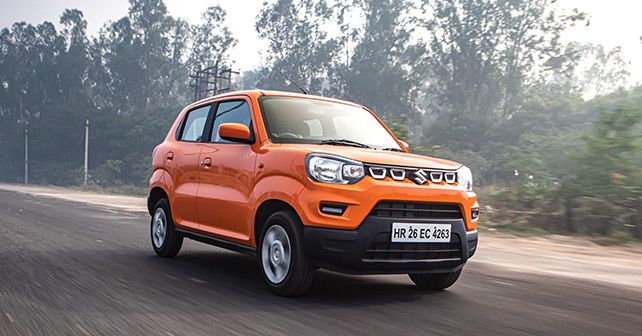
Brewing controversy
More often than not, us critics like to play it safe when it comes to the styling of a car by claiming that the aesthetic appeal of a product is subjective. And while that’s true in most cases, today, I’d like to take the liberty to speak for all of us – the S-Presso simply looks awful and there’s no doubt about it!
If you have a working pair of eyes, you can’t disagree that the design of the S-Presso just doesn’t work from any angle. The tall profile, narrow track, and bland side & rear profiles seem to lack a sense of cohesiveness. And that toothy grille upfront – well, it reminds me of the ‘bad piggies’ from Angry Birds.
On top all of this, the extra-loud paint options don’t seem to soften the blow either. You see, bright orange is a shade that works very well on Lamborghinis and KTMs, but I’m not entirely convinced that it’s the right choice on an entry-level family car. Having said that, I’ve seen a few S-Pressos on the road in ‘boring’ shades, like good ol’ white, and I think it looks quite acceptable.
However, if you still choose to be brave and opt for a bright coloured S-Presso, be prepared to be brutally judged by the world, and deservedly so!
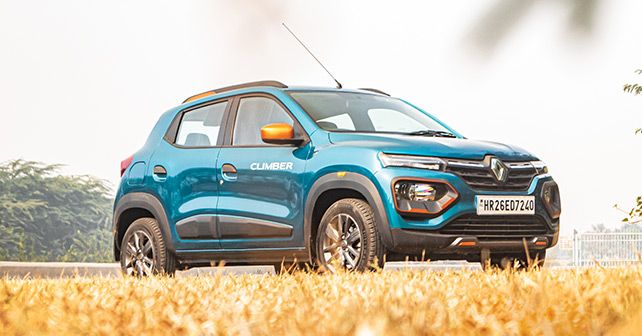
Now, turn your eyes to the Renault, and you’ll notice that it’s conspicuously different. The Kwid was never really a bad looking car, but, with the facelift, it looks even more handsome and contemporary. The new front fascia is, of course, its party piece, as it features a futuristic design, with split headlamps, a huge grille, funky looking DRLs, and a muscular bumper.
Around the sides, and the back too, it looks quite proportionate and smart. The LED light guides on the tail-lamps give it a premium look, while the squared-off wheel arches, coupled with faux alloy wheels, are all very neatly done.
The Kwid’s design, yet again, proves that entry-level cars needn’t be unimaginative. So, in terms of sheer aesthetic appeal, the S-Presso simply fails to match the Renault.
Ace of space
As controversial as its exterior may look, the interior of the S-Presso leaves you pleasantly surprised. The first thing you’ll notice is how spacious the cabin is – it’s almost as spacious as the WagonR at the front and back, if not more. The tall-boy stance also allows you to sit higher up, and, as a result, you do get a mini-SUV-like commanding view.
The centrally stacked instrument cluster, along with a 7.0-inch touchscreen infotainment system, is a neat touch, but the body-coloured surrounds again look a bit kitschy – it looks like a poor man’s Mini, to be honest. Having said that, the textured plastic on top of the dashboard, and the plenty of cubbyholes, give it a more upmarket and practical appeal. However, there’s no central locking button, and rear-seat passengers don’t get the luxury of power windows even in the top-end variant.
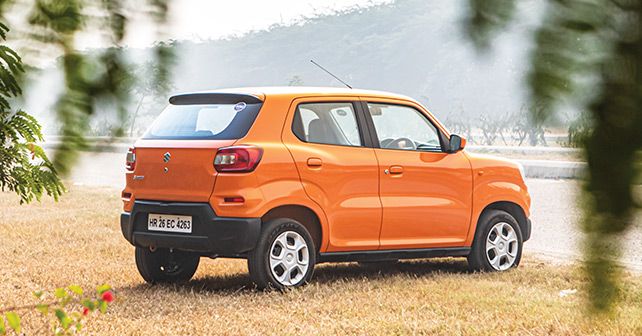
Step inside the Kwid after the S-Presso, and you can’t help but feel a little claustrophobic – the Kwid’s cabin is really cramped in comparison to the S-Presso’s. The Kwid truly feels like a small car, with just about enough room at the front, while, at the back, it can’t hold a candle to the S-Presso’s spacious rear bench.
Sure, the Climber variant does get an armrest at the back for added comfort, but full-size adults will feel claustrophobic over long drives. The Kwid also loses marks for its plastic quality, which is hard, scratchy and feels cheap.
However, the design and layout of the cabin brings it back in the race – to my eyes, it looks smarter and in tune with the times. Like the S-Presso, the Kwid also gets an all-digital instrument cluster, but with a rev counter. Plus, with blue backlit and colour coordinated bits and bobs, it looks youthful, without trying too hard.
The Kwid’s larger 8.0-inch touchscreen also feels a bit crisper than the S-Presso’s. Plus, the Kwid also gets a rear parking camera and sensors, whereas the S-Presso only has parking sensors. Both cars come with Android Auto and Apple Car Play, and during the test both units worked flawlessly.
In terms of equipment, the Kwid gets rear power windows as optional, as well as a central locking button. However, compared to the S-Presso, the Kwid misses out on steering controls, and it doesn’t even have internally adjustable ORVMs!
What’s really surprising is that both cars miss out on a day-night rear-view mirror. In this day and age, that’s simply unacceptable – both in terms of safety and convenience.
Speaking of safety, ABS and a driver airbag are standard in both cars, while both also offer an optional passenger airbag. The structural integrity of both vehicles is unknown at the moment, but both Maruti Suzuki and Renault claim that these models meet India’s latest crash test norms.
Same, but different
The Kwid’s and S-Presso’s powertrains are neck-and-neck on paper. Both are powered by 1.0-litre three-cylinder petrol engines with near-identical power and torque ratings – 67bhp/90Nm (S-Presso) and 67bhp/91Nm (Kwid). Power transmission duties in both cars are carried out by 5-speed manual gearboxes, while AMTs are optional. For our test, we used the manual versions.
Now, while both engines sound similar, they couldn’t be more different on the move. The S-Presso’s engine comes from Suzuki’s K-Series and is BS-VI compliant. In typical Suzuki style, it’s a rev-happy and exciting powertrain. It feels eager at low revs and comes on strong as you step on the gas. Mild vibrations are present at idle, but, overall, it’s a very refined motor.
The light clutch action and short-throw gearbox, clubbed with this peppy motor, make the S-Presso a breeze to drive in traffic. The motor does tend to wheeze at high revs, meaning you can hear its protests once you go past 100km/h. Overall, though, the driving experience is quite effortless thanks to its motor.

The moment you crank up the Kwid’s engine, things start going downhill for the little Renault. Not only does the engine sound rough at idle, but also shakes as if it’s possessed. As the revs climb, it becomes even noisier, and the three-pot motor starts whining like an old lady! The best way to keep it calm is to shift up at 3,000rpm.
However, there’s a catch. The Kwid’s motor lacks the low-end punch of the S-Presso’s brilliant K Series engine, and, as a result, it doesn’t have any juice in the lower part of the rev range. In fact, you’ll find yourself slipping the clutch over speed-breakers and in slow-moving traffic just to keep the motor spinning.
The mid-range is fairly strong though, and, if you ignore the noise, it feels marginally quicker than the S-Presso in the middle part of the rev range. Having said that, the engine feels gruff all the time. Since this is still a BS-IV motor, we’re hoping that the refinement levels will go up with the BS-VI upgrade, which is due by April 2020.
Comfort vs Composure
The S-Presso is underpinned by Suzuki Heartect K platform, which forms the base for the company’s ‘kei’ cars in Japan. However, for its application in India, it has been modified. All told, the ride quality of the S-Presso is pretty impressive, thanks to the rigid chassis.
The suspension is softly sprung, and, as a result, the ride quality is very supple at low speeds. When the speed builds up, the vehicle wavers a bit. At triple-digit speeds, you need to be a wee bit careful, as it doesn’t feel as stable as the Kwid, owing to its tall height and narrow track.
There’s also a lot of wind noise that filters into the cabin when you’re doing triple-digit speeds. On the positive side, the handling is pretty neutral, and it’s an interesting – if not exciting – little car to throw around corners. However, body roll is quite evident when pushed harder. The electric steering lacks any feel whatsoever, but it is direct and responsive.
The Kwid, on the other hand, has signature Renault traits in terms of ride and handling. Compared to the S-Presso, its ride quality is a tad stiffer at low speeds, but once you speed up, it’s more pliant and glides over undulations and bad roads more confidently. It also feels more natural and more planted because of its lower height.
Again, the steering is lifeless and doesn’t even pretend to self-centre. However, it’s light to twirl and does the job fine for commuting in daily traffic. Around corners, thanks to its wider track and low ride height, the Kwid feels more composed than the S-Presso. It’s a similar story on the open road too, as the Kwid feels more stable at high speeds.
Verdict
As we’ve established by now, both the S-Presso and Kwid are evenly matched for the most part. In terms of equipment, engine specifications, and pricing, they’re neck-and-neck. However, after driving these two back-to-back, you’ll realise that they are actually worlds apart.
You see, the Kwid – with its funky looks, jazzy interior, and upmarket features – is more suited for the first-time buyer, probably a millennial for whom practicality isn’t the primary concern. The S-Presso, well, is trying to woo youngsters as well, but it’s trying too hard. However, it is, without a doubt, the more rounded package of the two – it’s spacious, more refined, frugal, and, most importantly, has Maruti’s immaculate network backing it up.
In the end, it all boils down to what you relate to more. For me, it’s the Kwid that gets my vote, but if you’re a more practical family man, the S-Presso is for you. Just don’t buy it in orange, please!
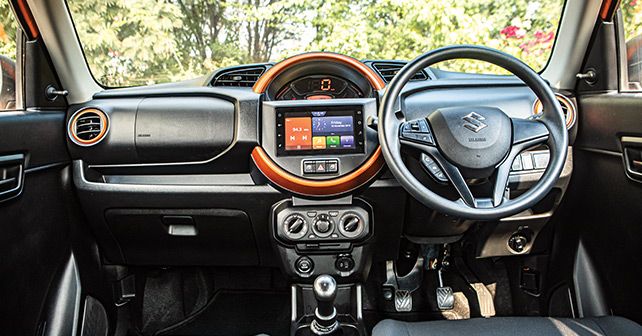
The S-Presso’s cabin feels a size bigger than the Kwid, as there’s acres of space. The quality and fit-and-finish levels are also better. Plus, it gets steering mounted controls.
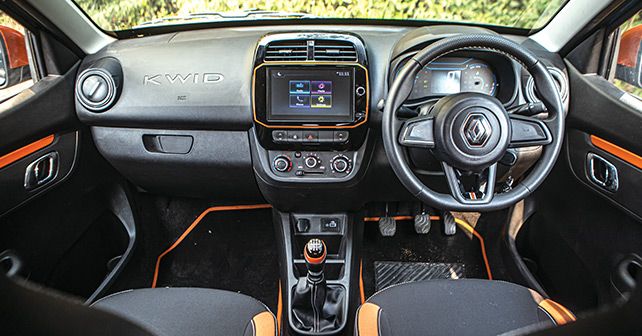
The Kwid’s cabin feels more youthful and is tastefully done. The 8.0-inch touchscreen infotainment is crisp and intuitive, while it also packs a rear parking camera and sensors. Weirdly, the ORVMs can’t be adjusted from inside!
https://www.youtube.com/watch?v=igjRAnFeJLQ
Also read - Maruti Suzuki S-Presso Review
Engine: 998cc / 3-Cylinders / 12 Valves / SOHC
Fuel: Petrol
Transmission: Front-Wheel Drive / 5-Speed Manual
Power: 67bhp @ 5,500rpm
Torque: 90Nm @ 3,500rpm
Price: ₹4.48 Lakh (ex-showroom, Delhi)
X-factor: If you can look beyond its oddball looks, the S-Presso is a refined, spacious and practical entry-level hatchback.
| Pros • Space • Refinement | Cons • Awkward design |



-1759843202561.webp)
